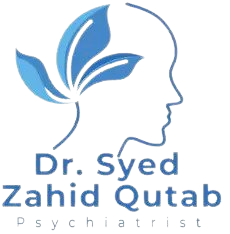OCD cleaning is a term used to describe the obsessive-compulsive behavior of constantly cleaning and organizing. It can often be overwhelming and time-consuming, causing stress and anxiety for those who struggle with it. Here is the question how to get rid of OCD cleaning?
In this comprehensive guide, we will discuss various strategies and tips on how to get rid of OCD cleaning.
Let’s dive in to get more details.
How to Get Rid of OCD Cleaning?

OCD (obsessive-compulsive disorder) cleaning is a type of obsessive-compulsive behavior where an individual feels the need to constantly clean and organize their surroundings. It is a common symptom of OCD, which is a mental health disorder characterized by uncontrollable thoughts and repetitive behaviors. A question was posed how to get rid of OCD cleaning?
People with OCD cleaning may feel overwhelmed by clutter or dirt, leading them to spend excessive amounts of time and energy cleaning and organizing their environment. They may also experience intense anxiety and distress if they are unable to maintain a certain level of cleanliness.
Strategies for Getting Rid of OCD Cleaning
There is no one-size-fits-all solution for overcoming OCD cleaning, as each individual’s struggle with the disorder may vary. However, there are some strategies that can be helpful in managing and reducing this behavior.
1. Seek Professional Help
The first step in getting rid of OCD cleaning is to seek professional help from a therapist or mental health professional. They can properly diagnose you with OCD and provide you with personalized treatment options, such as cognitive-behavioral therapy (CBT) or medication.
2. Understand Your Triggers
It’s essential to understand what triggers your OCD cleaning behavior. Triggers can be anything from a specific object, thought, or situation that causes you to feel the need to clean excessively. Keeping track of these triggers can help you identify patterns and work on managing them.
3. Practice Mindfulness
Mindfulness techniques can be helpful in managing OCD cleaning tendencies. By focusing on the present moment and accepting your thoughts and feelings without judgment, you can reduce anxiety and stress associated with cleaning.
4. Set Realistic Goals
Setting realistic goals for cleaning can help break the pattern of obsessive behavior. Instead of trying to achieve perfection, focus on completing tasks in a reasonable amount of time and setting limits for how often you clean certain areas.
This can help reduce the pressure and stress associated with OCD cleaning.
5. Challenge Your Thoughts
OCD cleaning is often driven by irrational thoughts and fears. By challenging these thoughts and replacing them with more rational ones, you can decrease the urge to clean excessively. Cognitive-behavioral therapy can be helpful in identifying and addressing these thought patterns.
Tips for Maintaining a Clean Space
While getting rid of OCD cleaning behavior is important, it’s also essential to maintain a clean and organized space. Here are some tips for keeping your environment tidy without succumbing to obsessive behaviors.
Create a daily cleaning routine:
Having a set routine can help reduce the anxiety and pressure associated with cleaning. Set aside specific times each day to clean, and stick to that schedule.
Declutter regularly:
One of the triggers for OCD cleaning is clutter. By decluttering your space regularly, you can minimize the need for excessive cleaning.
Use organizational tools:
Invest in storage containers and other organizational tools to help keep your space clutter-free and easier to clean.
Focus on functionality:
Instead of aiming for a perfectly spotless space, focus on keeping your environment functional and comfortable for yourself.
Treatment Options for OCD Cleaning
As mentioned earlier, seeking professional help is crucial in managing and getting rid of OCD cleaning. Some common treatment options include:
Cognitive-behavioral therapy (CBT):
This type of therapy focuses on identifying and challenging irrational thoughts and behaviors associated with OCD.
Exposure and response prevention (ERP):
ERP involves exposing yourself to triggers or situations that typically lead to OCD cleaning and learning to resist the urge to engage in compulsive behaviors.
Medication:
In some cases, medication may be prescribed by a mental health professional to help manage the symptoms of OCD.
Exposure and Response Prevention
Exposure and response prevention (ERP) is a type of therapy often used to treat OCD, including obsessive cleaning behaviors. It involves exposing yourself to situations or triggers that typically lead to compulsive cleaning and learning how to resist the urge to engage in these behaviors.
Conclusion
OCD cleaning can be a challenging and overwhelming struggle, but it is possible to overcome. In response to the question of how to get rid of OCD cleaning? Seeking professional help, understanding your triggers, and practicing mindfulness techniques are all essential steps in managing this behavior.
Remember to set realistic goals and focus on maintaining functionality rather than perfection when it comes to cleanliness. With these strategies and tips, you can learn to live with a clean and organized space without the burden of OCD cleaning. So, don’t hesitate to seek help and start implementing these techniques today.
FAQ
Frequently asked questions by people.
How to stop being obsessive about cleaning?
The first step is to seek professional help from a therapist or mental health professional. They can provide you with personalized treatment options and strategies for managing your OCD cleaning behavior.
Why am I so OCD about cleaning?
There is no one specific cause for OCD cleaning, but it is believed to be a combination of genetic, environmental, and neurobiological factors. It is important to seek professional help in understanding and managing your obsessive cleaning tendencies.
How do you stop OCD hand washing?
This can be a challenging behavior to overcome, but seeking professional help and implementing strategies such as mindfulness techniques and exposure and response prevention therapy can be helpful.
